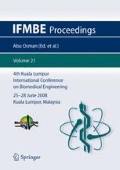Abstract
Biomechanics aims to explain the mechanics of life and living [1]. It is the science that deals with the forces acting on biological systems and the effects that these forces produce. Muscles play a fascinating role in biomechanics research as they are the active force producers in animals and humans; they are controlled by the nervous system, thus movement is a mechanical event produced by muscles and controlled by an intricate system of voluntary, spinal and sensory control.
Muscle contraction and movement has been studied for centuries, but still, we lack detailed insight intothe neuro muscular control of movement and the molecular mechanisms of muscle contraction and force production. The aim of my plenary lecture will be to highlight, what I consider to be, two of the most relevant biomechanics questions in this area of research.
The distribution problem is one of the central problems in biomechanics. It is aimed at determining the forces of musculoskeletal structures (primarily the muscles) acting aroundjoints. Since joints have typically many more muscles than rotational degrees of freedom, no unique solution is available and we have tackled this problem theoretically and experimentally by measuring the muscle forces during unrestrained animal locomotion. We found that mathematical optimization (the most prominently used theoretical approach) cannot predict muscle forces accurately with current cost functions because of generic limitations of the algorithms. Experimentally, we discovered that force sharing among a set of synergistic muscles is highly variable and depends on the movement task. Specifically, it is possible to measure large forces in the cat soleus for a standing task while the medial gastrocnemius is completely silent, while the reverse is true for paw shake or scratching actions.
The distribution problem is defined on a system’s level, and we try to understand the functioning of human and animal movement control and mechanics. Muscle contraction, in contrast, is a problem on the molecular level. Although excellent proposals have been made over half a century ago [2], the detailed molecular mechanisms of muscle contraction and force production remain largely unknown. We have approached this problem by studying specific history-dependent properties of muscle force production which cannot be explained with the current paradigm for muscle contraction: the cross-bridge theory. There is strong evidence now that force production does not exclusively depend on the actin-myosin overlap (as currently assumed, [3]), that actin-myosin interactions depend on the contractile history (and that this history is stored in a molecular memory, [4]), and that passive (non actin-myosin related) force production is variable and an important component of contractility [5].
Access this chapter
Tax calculation will be finalised at checkout
Purchases are for personal use only
References
Fung YC (1990) Biomechanics, motion, flow, stress, and growth. Springer Verlag, Germany
Huxley AF (1957) Muscle structure and theories of contraction. Progress in Biophysics and Biophysical Chemistry 7:255–318
Gordon, AM, Huxley, AF, and Julian, FJ (1966) Tension development in highly stretched vertebrate muscle fibres. Journal of Physiology 184:143–169
Herzog, W, Lee, EJ, and Rassier, DE (2006) Residual force enhancement in skeletal muscle. Journal of Physiology 574(3):635–642
Joumaa, V, Rassier, DE, Leonard, TR, and Herzog, W (2007) Passive force enhancement in single myofibrils. Pflügers Arch-European Journal of Physiology 455:367–371
Author information
Authors and Affiliations
Editor information
Editors and Affiliations
Rights and permissions
Copyright information
© 2008 Springer-Verlag Berlin Heidelberg
About this paper
Cite this paper
Herzog, W. (2008). The Biomechanics of Muscle Contraction: or Firing Biomechanics Research. In: Abu Osman, N.A., Ibrahim, F., Wan Abas, W.A.B., Abdul Rahman, H.S., Ting, HN. (eds) 4th Kuala Lumpur International Conference on Biomedical Engineering 2008. IFMBE Proceedings, vol 21. Springer, Berlin, Heidelberg. https://doi.org/10.1007/978-3-540-69139-6_5
Download citation
DOI: https://doi.org/10.1007/978-3-540-69139-6_5
Publisher Name: Springer, Berlin, Heidelberg
Print ISBN: 978-3-540-69138-9
Online ISBN: 978-3-540-69139-6
eBook Packages: EngineeringEngineering (R0)

